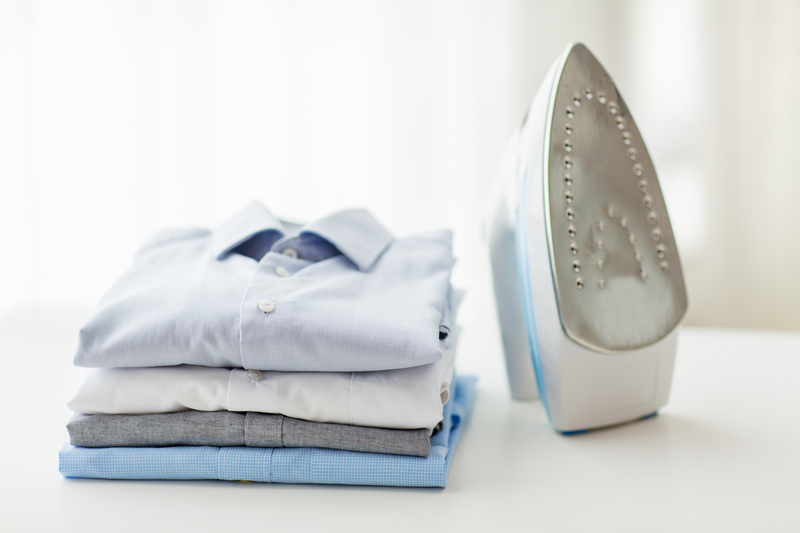Simple Techniques to Prevent Mold in Your Bathroom
Posted on 03/10/2025
Simple Techniques to Prevent Mold in Your Bathroom
Mold in the bathroom is a common concern, and for good reason. Not only is it unsightly, but bathroom mold can create unpleasant odors, damage surfaces, and pose health risks. Fortunately, preventing mold in the bathroom is entirely possible with some straightforward techniques. This comprehensive guide will walk you through simple and effective ways to keep your bathroom fresh, clean, and mold-free.
Understanding Why Mold Grows in Bathrooms
To effectively stop mold growth, it's essential to know why bathroom mold is such a persistent problem. Most molds thrive in:
- Warm temperatures
- High humidity
- Poorly ventilated spaces
- Organic material (such as soap residue, fabric, dust)
The typical bathroom environment checks all of these boxes, making it a hotspot for mold. The constant moisture from showers, tubs, and sinks, combined with limited airflow, creates an ideal breeding ground for mold spores. However, with a little diligence, you can make your bathroom inhospitable to mold.

Easy Prevention Techniques for Bathroom Mold
1. Improve Bathroom Ventilation
Proper ventilation is perhaps the most important factor in preventing mold in your bathroom. When you take a hot shower or bath, steam rises and humidity increases. If it lingers, mold finds a perfect home. Here's how to beat it:
- Install and use an exhaust fan: Make sure your bathroom has a reliable exhaust fan. Turn it on during and after bathing or showering to help remove excess moisture from the air.
- Run the fan for at least 15-20 minutes post-shower to ensure the bathroom dries fully. Consider timers to make this effortless.
- Open bathroom windows: If your bathroom has a window, open it during and after showers to allow steam to escape and promote airflow.
- Leave the door open: When not in use, leave the bathroom door ajar to allow fresh air to circulate.
2. Keep Surfaces Dry
Mold can grow within 24-48 hours on moist surfaces. Keeping your bathroom dry is fundamental to preventing mold. These tips make it easy:
- Wipe down wet surfaces: After every shower or bath, use a squeegee or towel on the walls, tiles, and shower door to remove water droplets.
- Don't forget the sink and countertop: Dry up spills, splashes, and puddles right away.
- Hang towels and bathmats so they dry quickly. Avoid leaving them crumpled on the floor.
3. Clean Regularly and Thoroughly
Cleanliness is key when it comes to bathroom mold prevention. Mold spores can settle and feed on soap scum, dust, and grime. Here are practical tips to minimize their chances:
- Scrub showers and tubs weekly: Use a mild cleaner or an anti-mold solution on tiles, grout, glass, and fixtures. You can make a homemade mold-fighting spray by combining equal parts white vinegar and water.
- Deep-clean grout lines: Focus on grout, as it's especially prone to mold growth. Use a baking soda paste or a commercial grout cleaner for stubborn spots.
- Wash shower curtains and liners regularly: Use hot water and add a little vinegar or baking soda to your laundry for extra cleaning power.
- Clean bathroom fan vents: Dust and debris can clog exhaust fans, reducing efficiency. Wipe them down every few months.
4. Minimize Clutter
Cluttered bathrooms with too many bottles, sponges, or bath toys give mold more places to hide and grow. To avoid mold in the bathroom:
- Limit products in the shower: Store only what you regularly use. Excess items collect water underneath, encouraging mold.
- Hang loofahs, sponges, and washcloths to dry completely between uses instead of leaving them in pools of water.
- Organize under-sink cabinets so air flows freely.
- Wash or replace bathroom rugs and mats frequently: These should dry out after use and be laundered often to prevent mold.
5. Monitor and Control Humidity
For effective bathroom mold prevention, keeping humidity in check is crucial. Mold typically thrives at humidity levels above 60%. How can you keep your bathroom's moisture content low?
- Invest in a hygrometer: This affordable device tells you the moisture content of the air. Try to keep bathroom humidity below 50%.
- Use a portable dehumidifier: If your bathroom is especially damp or poorly ventilated, a small dehumidifier can quietly remove excess moisture.
- Check for plumbing leaks: Even small, hidden drips under the sink or behind the toilet can raise humidity. Fix leaks promptly to prevent mold formation.
6. Use Mold-Resistant Products
Today's building materials offer smart solutions for stopping mold in the bathroom:
- Seal grout and tile: Apply a waterproof sealant to grout and tiles every six months to prevent water penetration.
- Choose mold-resistant paint: Use paints designed for damp areas, which contain mildewcides that help resist mold and mildew growth.
- Opt for mold-resistant drywall and backer board: If renovating, select these products for shower walls or bathroom remodels.
- Replace old caulking: Inspect seals around tubs and sinks and re-caulk where necessary. Use mold-resistant caulk for better protection.
7. Enhance Natural Light
Sunlight is a powerful natural enemy of mold. UV rays kill mold spores and dry out wet surfaces:
- Open blinds or curtains: If your bathroom has windows, let natural light in whenever possible.
- Keep windows clean: Free of condensation and dirt to maximize light.
- Consider adding a skylight during renovations for optimal daylight exposure.
8. Regularly Inspect Problem Areas
Mold often hides in unexpected bathroom spots until it becomes a big problem. Early detection is critical:
- Check behind and under sinks: Look for leaks, discoloration, or a musty odor.
- Inspect grout, caulk, and corners: Watch for black or green spots -- early signs of bathroom mold.
- Look behind the toilet and around the base: Moisture can pool here unchecked.
- Examine ceilings and around fans or windows for condensation, stains, or mildew.
The Importance of Immediate Mold Removal
If you spot mold starting to form -- even a small patch -- act fast. Mold spreads rapidly and becomes harder to eliminate over time. Remove it promptly by:
- Scrubbing with a mold cleaning spray: Commercial or DIY sprays (such as a mix of vinegar and water) can kill visible mold.
- Discarding heavily infested items: Fabrics, wooden items, or rugs heavily contaminated with mold should be safely thrown away.
- Sealing and repainting walls or ceilings affected by mold after cleaning and drying.
Always wear gloves and ensure adequate ventilation when cleaning mold to protect your health.

Bonus Tips: Unexpected Ways to Prevent Bathroom Mold
- Avoid overwatering bathroom plants: Excess water can lead to dampness on floors and windowsills, making an inviting spot for mold.
- Ensure good drainage for soap dishes and trays: Sitting water creates prime conditions for mold.
- Switch to liquid soap in place of bar soap: Bar soap can contribute to soap scum buildup, providing a food source for mold.
- Upgrade bathroom fixtures (like faucets and showerheads) to models that resist water buildup and are easier to clean.
Frequently Asked Questions About Preventing Bathroom Mold
Why does mold keep coming back in my bathroom?
Persistent mold may be due to ongoing high humidity, poor ventilation, or leaks. Review the techniques above, especially fixing any plumbing leaks and improving air circulation.
Is there a safe way to remove mold from my bathroom?
For small areas, use gloves and spray a 1:1 mixture of vinegar and water or a commercial mold remover. For larger or persistent mold outbreaks, consult a professional to ensure safe removal.
Can I prevent mold without chemicals?
Absolutely! Regular drying, good ventilation, and natural cleaners like vinegar, baking soda, and hydrogen peroxide are highly effective at preventing mold in the bathroom without harsh chemicals.
Is bathroom mold dangerous?
While not all mold is toxic, it can cause allergic reactions and worsen air quality. People with asthma, allergies, or weakened immune systems are especially sensitive to mold spores. Preventing growth is the best strategy for a healthy home.
Conclusion: A Mold-Free Bathroom Is Within Reach
By following these simple techniques to prevent mold in your bathroom, you can enjoy a cleaner and healthier environment. The keys are ventilation, moisture control, and regular cleaning. A little daily maintenance can save you time, money, and hassle in the long run. If you make these habits part of your routine, you'll rarely need to worry about mold showing up in your bathroom again.
Remember: If you ever encounter a stubborn mold problem, don't hesitate to call in a professional for help.
Need More Help Preventing Bathroom Mold?
For additional advice and personalized solutions tailored to your home, reach out to your local mold remediation experts. Protect your bathroom -- and your family -- with these effective mold prevention techniques today!




